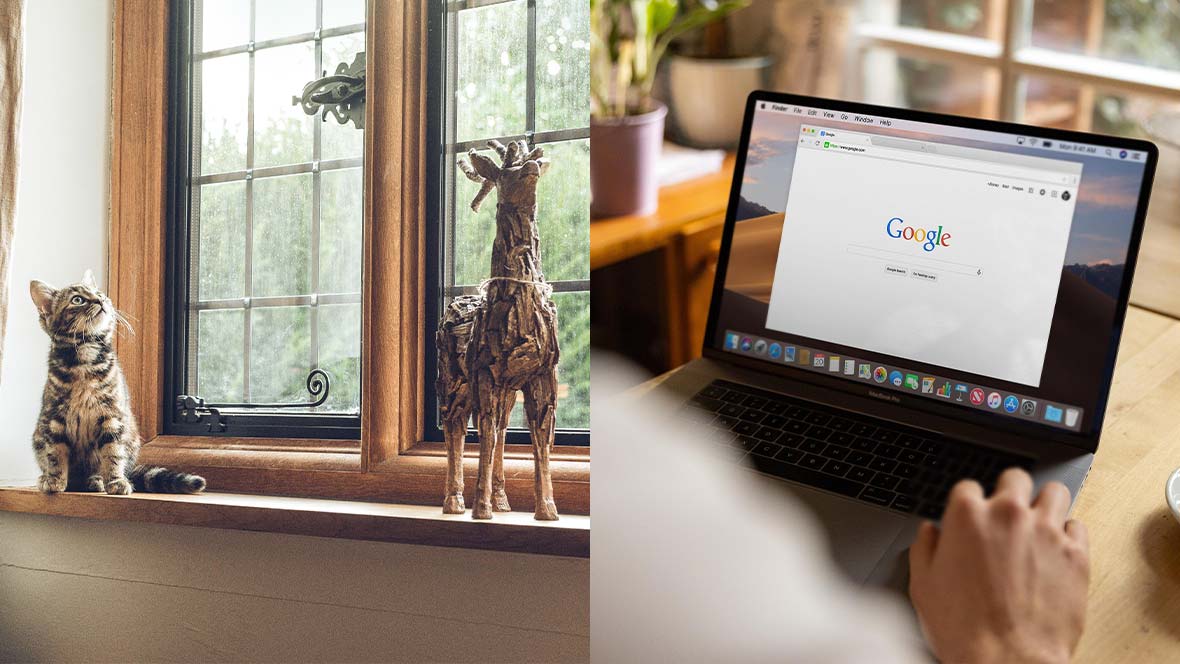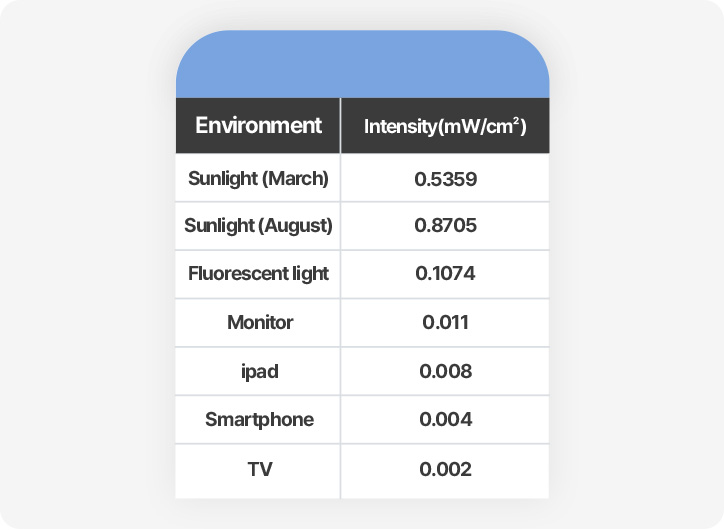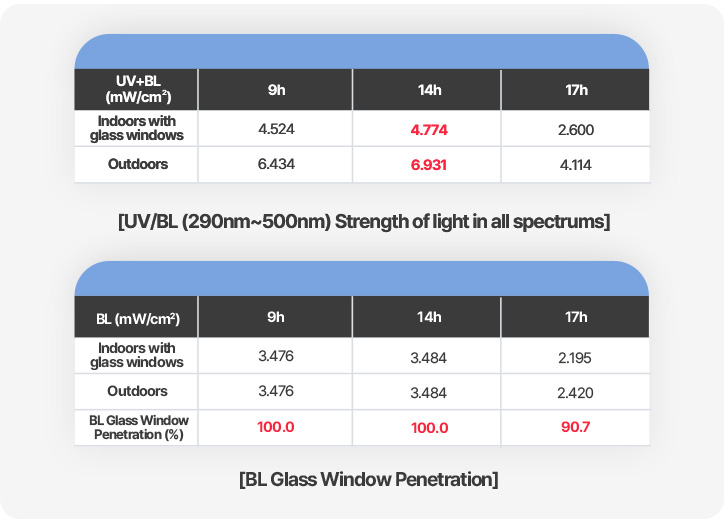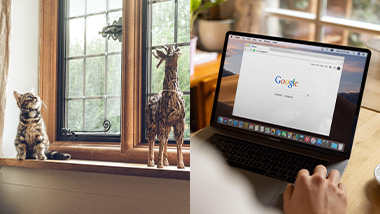
#3 Blue Light, Another Sun Indoors!
20221213
What would happen if you went outside without wearing any
sunscreen on a day with scorching sun, the temperature over 37°C,
and heat shimmer on the road? “The skin will age faster.” “Melasma
and blemishes will develop.” Just like what most people are aware
of, excessive exposure to UV rays causes melasma, blemishes or
even redness and a burning sensation on the skin. This is why we
can easily find people wearing sunscreen as well as using a
parasol, a hat, or sunglasses when there’s a heat wave alert
across the country. There is also, however, another type of
sunlight besides UV rays that people are discussing ways to avoid
to delay aging. That is blue light.
Exposure to blue light is ever increasing with the changes of
daily life caused by COVID-19, such as online learning aided by
digital devices, watching Netflix through a monitor, and checking
YouTube videos on a smartphone, etc. According to LBLL’s research
on the life of women today, the exposure to blue light has
increased by 1.7 times compared to the pre-pandemic era. This
light generated from electric devices induces corneal damage and
dry eye syndrome. It is also known to affect the body’s biorhythm
and cause insomnia. What then is the potential for skin damage
caused by blue light?
Blue light has the highest level of energy within the wavelength
of visible light. Electronic devices are one of its sources, but a
large portion of sunlight consists of blue light as well. Sunlight
that reaches the earth is 3-5% UV rays, 42-43% visible light, and
52-55% infrared light. Blue light takes up 28% of the entire
visible light spectrum.
While a great amount of blue light is emitted from sunlight as
well as electronic devices, LBLL suggests that the next biggest
source of this light is the fluorescent light, which helps us
maintain our everyday life.

| Environment | Intensity(mW/cm2) |
|---|---|
| Sunlight (March) | 0.5359 |
| Sunlight (August) | 0.8705 |
| Fluorescent light | 0.1074 |
| Monitor | 0.011 |
| ipad | 0.008 |
| smartphone | 0.004 |
| TV | 0.002 |
As a result of measuring the strength of blue light people are exposed to every hour, with office workers in their 20s to 40s, the strongest sources were sunlight > fluorescent light > monitor > tablet PC > smartphone > TV. This shows that fluorescent light releases a stronger light compared to monitors or smartphones, more than what people would imagine. There’s also another research finding that needs to be highlighted.

| UV+BL (mW/cm2) |
9h | 14h | 17h |
|---|---|---|---|
|
Indoors with glass windows |
4.524 | 4.774 | 2.600 |
| Outdoors | 6.434 | 6.931 | 4.114 |
[UV/BL (290nm~500nm) Strength of light in all spectrums]
| BL (mW/cm2) | 9h | 14h | 17h |
|---|---|---|---|
|
Indoors with glass windows |
3.476 | 3.484 | 2.195 |
| Outdoors | 3.476 | 3.484 | 2.420 |
| BL Glass Window Penetration (%) |
100.0 | 100.0 | 90.7 |
[BL Glass Window Penetration]
The table above shows the results of observing the amount of
blue light outdoors and indoors through a glass window at
different times of the day. The window penetration of blue light
shows a surprising result! The strength of blue light measured
indoors through a glass window is identical with that of
outdoors, suggesting that 100% of the blue light in the sunlight
reaches indoor spaces as well. While only 6% of UVB and 36% of
UVA reach the earth’s surface, blue light makes a 100% touch
down.
One can never be safe from blue light whether indoors or
outdoors! According to LBLL, being exposed to blue light for
over 1.5 months makes the skin dull and dry. After 4 months of
exposure to strong blue light, the skin loses its elasticity,
becomes red and the dryness becomes aggravated.
One of the more interesting findings was that the level of skin damage from the combination of UV rays and blue light was much greater than that induced by blue light alone.

The chart above shows that skin damage, such as melanin increase
and reduced elasticity, was more affected by the combination of UV
rays and blue light compared to the sole influence of UV rays.
Skin redness was more associated with UV rays than blue light, but
the level of damage was higher with the combination of the two
lights.
There exist UV rays and blue light both indoors and outdoors, and
they accelerate skin aging. They just have different strengths!
That also reminded me of myself though being completely unaware of
that knowledge, sitting in front of my laptop with my unprotected
face and writing things, and drinking coffee by the window and
looking into my cellphone. Then at night, I devoted my heart and
soul to skin care using cosmetics in the attempt to have clear
skin. To avoid pouring water into a sieve like I did, it’s a smart
idea to make a habit of blocking UV rays and blue light both
indoors and outdoors, by using a product that is able to protect
you against blue light.






